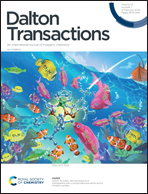Spontaneous redox reaction-mediated interfacial charge transfer in titanium dioxide/graphene oxide nanoanodes for rapid and durable lithium storage†
Abstract
Titanium dioxide (TiO2) anodes show significant advantages in ion storage owing to their low cost, abundant sources, and small volume change during cycling. However, their intrinsic low electronic conductivity and sluggish ion diffusion coefficient restrict the application of TiO2 anodes, especially at high current densities. The construction of a covalently-bonded interface in TiO2-based composite anodes is an effective approach to solve these issues. Covalent bonds are usually formed in situ during materials synthesis processes, such as high-energy ball milling, solvothermal reactions, plasma-assisted thermal treatment, and addition of a linking agent for covalent coupling. In this study, we demonstrate that a spontaneous redox reaction between defective TiO2 powder and an oxidative graphene oxide (GO) substate can be used to form interfacial covalent bonds in composites. Different structural characterization techniques confirmed the formation of interfacial covalent bonds. Electrochemical measurements on an optimized sample showed that a specific capacity of 281.3 mA h g−1 after 200 cycles can be achieved at a current density of 1 C (1 C = 168 mA g−1). Even at a high rate of 50 C, the electrode maintained a reversible capacity of 97.0 mA h g−1. The good lithium storage performance of the electrode is a result of the uniquely designed composite electrodes with strong interfacial chemical bonds.



 Please wait while we load your content...
Please wait while we load your content...